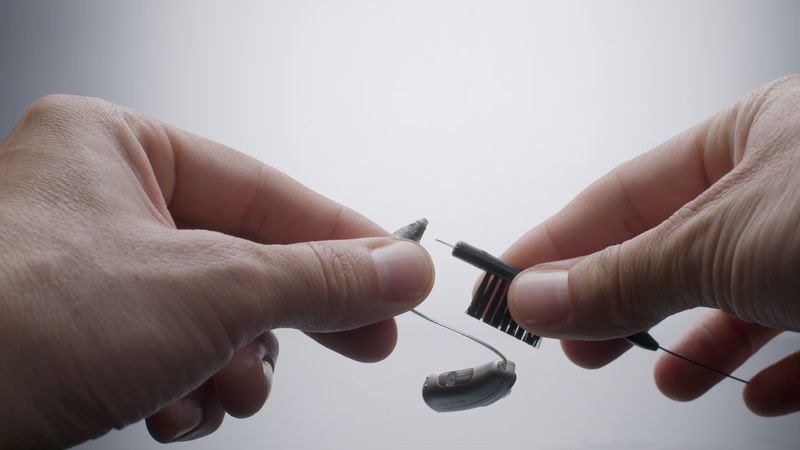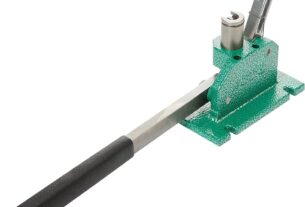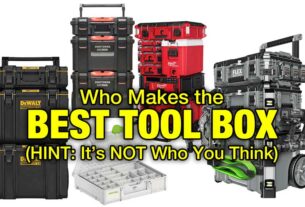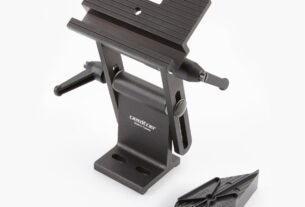Are you struggling to keep your hearing aids clean and functional? Do you want to ensure that your devices last longer and perform better? If so, you need the right hearing aid cleaning tools. With the right tools and techniques, you can maintain your hearing aids and prevent costly repairs or replacements.
In this article, we will discuss the best hearing aid cleaning tools, their features, and how to use them effectively. We will also provide some tips on how to clean your devices without damaging them. Let’s get started!
[h2] Why You Need Hearing Aid Cleaning Tools [/h2]
Hearing aids are complex devices that require regular maintenance and cleaning. They come into contact with earwax, sweat, oil, and other debris that can clog their components and affect their performance. In addition, moisture can build up inside the devices, leading to corrosion or damage.
To keep your hearing aids working properly, you need to clean them regularly with appropriate tools. By doing so, you can:
– Prevent wax buildup: Earwax is a common problem for hearing aid wearers. It can accumulate in the receiver tube, earmold, or speaker port and reduce sound quality. Using a wax removal tool can help you remove excess wax without pushing it deeper into the device.
– Remove debris: Dust, dirt, and other particles can accumulate on the surface of your hearing aids or in their crevices. Using a brush or cloth can help you remove these particles safely.
– Control moisture: Moisture is a major enemy of hearing aids. It can cause corrosion, rusting, or short-circuiting of electronic components. Using a drying kit or dehumidifier can help you remove excess moisture from your devices.
– Extend lifespan: Regular cleaning and maintenance can extend the lifespan of your hearing aids and save you money on repairs or replacements.
– Improve sound quality: Clean hearing aids can produce clearer and more natural sound, allowing you to enjoy your conversations, music, or TV shows better.
[h2] Types of Hearing Aid Cleaning Tools [/h2]
There are several types of hearing aid cleaning tools available on the market. Each tool has its own features and benefits, depending on the type of device you have and the degree of cleaning required. Here are some of the most common types:
1. Wax removal tool
A wax removal tool is designed to remove earwax from the receiver tube, earmold, or speaker port of your hearing aid. It usually consists of a soft loop or brush that can scoop out or brush away the wax without damaging the delicate parts inside your device.
Some popular wax removal tools include:
– Pro Tech Earwax Removal Tool
– Phonak Wax Guard Tool
– Widex Wax Guards
– Starkey Hear Clear Wax Guards
When using a wax removal tool, be gentle and avoid inserting it too deep into your ear canal or hearing aid. Follow the instructions carefully and use it only when necessary.
2. Brush
A brush is a simple but effective tool for removing dust, dirt, or other debris from your hearing aids. It usually consists of soft bristles that can reach into small crevices or hard-to-reach areas.
Some popular brushes include:
– OtoFloss Brush by Westone
– Phonak Cleaning Brush
– ReSound Cleaning Brush
– Siemens Hearing Aid Brushes
When using a brush, make sure it is clean and dry before touching your hearing aids. Use it gently and avoid applying too much pressure or force.
3. Cloth
A cloth is another basic tool for wiping off the surface of your hearing aids or removing moisture from them. It should be soft, lint-free, and non-abrasive to prevent scratching or damaging your devices.
Some popular cloths include:
– Audiologist’s Choice Microfiber Cleaning Cloth
– Phonak Cleaning Cloth
– Serene Innovations Microfiber Cleaning Cloth
– Starkey Dry Aid Jar with Desiccant
When using a cloth, avoid using paper towels, tissues, or other rough materials that can leave residues or fibers on your hearing aids. Use a clean and dry cloth and wipe gently in a circular motion.
4. Drying kit/dehumidifier
A drying kit or dehumidifier is a device that can remove excess moisture from your hearing aids and prevent corrosion or damage. It usually consists of a container filled with drying beads, crystals, or pellets that absorb moisture from your devices.
Some popular drying kits/dehumidifiers include:
– Dry & Store Global II Electric Hearing Aid Dehumidifier
– Ear Technology Corporation Dry Caddy
– Phonak D-Dry Hearing Aid Dryer
– ReSound Smart 3D Dry&Go Kit
When using a drying kit or dehumidifier, follow the instructions carefully and replace the drying agent regularly. Do not expose your hearing aids to extreme heat or cold, as this can damage their internal components.
[h2] How to Clean Your Hearing Aids [/h2]
Now that you know the types of hearing aid cleaning tools available, let’s see how to use them effectively. Here are some general tips for cleaning your hearing aids:
1. Wash your hands before handling your devices.
2. Turn off your hearing aids before cleaning them.
3. Use the right tool for each part of your device.
4. Be gentle and avoid applying too much pressure or force.
5. Avoid exposing your devices to water, alcohol, or other liquids.
6. Clean your devices over a soft surface like a towel or cloth to prevent dropping or losing them.
7. Clean your devices daily if possible but at least once a week.
Here are some specific steps for cleaning your hearing aids:
1. Remove the earmold or dome from the device and inspect it for wax or debris.
2. Use a wax removal tool or brush to clean the earmold or dome carefully.
3. Wipe the surface of the earmold or dome with a clean, dry cloth.
4. Inspect the receiver tube or speaker port for wax buildup or debris.
5. Use a wax removal tool or brush to remove any excess wax or debris.
6. Clean the surface of the hearing aid with a clean, dry cloth.
7. Use a drying kit or dehumidifier to remove excess moisture from your devices overnight.
8. Check your batteries regularly and replace them when necessary.
[h2] Conclusion [/h2]
Cleaning your hearing aids is essential for maintaining their performance and longevity. By using appropriate tools and techniques, you can keep your devices free from earwax, debris, and moisture, and enjoy clearer and more natural sound.
In this article, we have discussed the best hearing aid cleaning tools, their features, and how to use them effectively. We hope this information has been helpful for you and that you can apply it in your daily routine.
If you have any questions or suggestions, feel free to leave a comment below. You can also visit our wiki reference for more information on hearing aids and related topics. Thank you for reading!
[wiki] https://en.wikipedia.org/wiki/Hearing_aid [/wiki]




